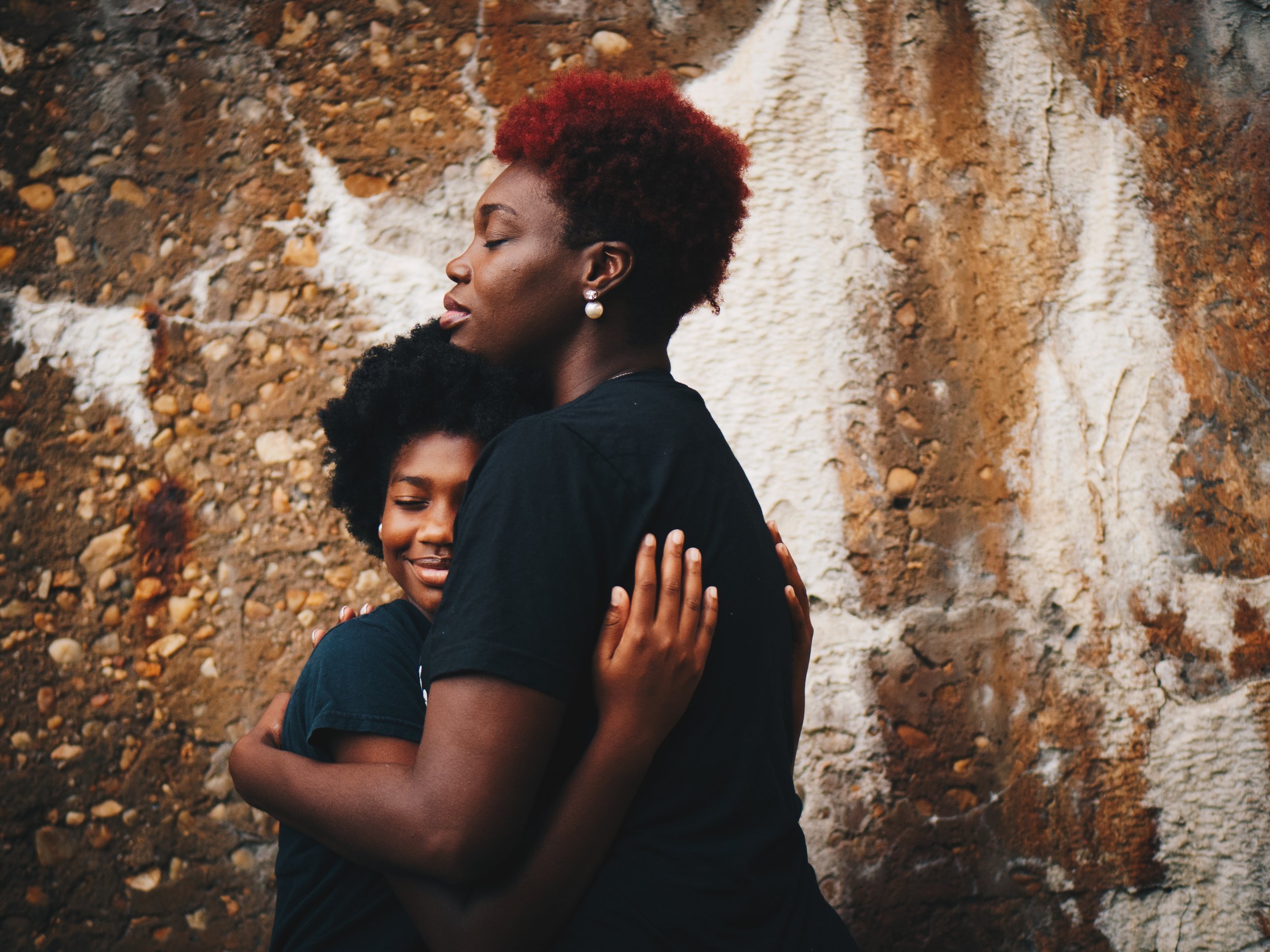Childhood PTSD and Treatments
More than 65% of children and adolescents are estimated to experience one or more traumatic life event by age 16, and of these about 16% will develop post-traumatic stress disorder (PTSD). Each child or teen processes the feelings that result from a traumatic life event differently, making PTSD very subjective in nature. For this reason, when seeking care, it is very important to work with a licensed child psychiatrist or psychologist who can tailor a treatment plan to your child’s specific needs.
We will start our discussion with an overview of PTSD before moving into the different treatment options available to you and your child.
What Is Post-Traumatic Stress Disorder?
Post-traumatic stress disorder, or PTSD, is a stress and trauma-related disorder that may develop after exposure to an event or ordeal in which death, severe physical harm or violence occurred or was threatened.
In community samples, more than two-thirds of children report experiencing a traumatic event by age 16, and it is not uncommon for children and adolescents to be exposed to more than a single traumatic event. While not all children who experience a traumatic event develop PTSD, an increased frequency or prolonged exposure may increase a child’s vulnerability of developing this disorder.
Common examples of traumatic experiences that children and adolescents may experience include:
Severe bullying
Sexual abuse
Physical abuse
Domestic violence
Community and school violence
Medical trauma
Natural disasters
Military-family related stressors
Sudden or violent loss of a loved one
Life-threatening illnesses
Serious accidents, including motor-vehicle accidents
Neglect
What Are The Symptoms?
Following exposure to a traumatic life event, most children and adolescents experience some form of short-term distress, however, most return to their prior levels of functioning after a few weeks or months.
In some cases, however, children may exhibit ongoing symptoms that interfere with their daily life. These include:
Nightmares
Sleep problems, such as difficulty falling or staying asleep
Reliving the event over and over in thought or in play
Becoming very upset when something causes memories of the event
Lack of positive emotions
Loss of interest in activities that previously enjoyed
Intense fear or sadness
Irritability
Outbursts of anger
Acting helpless, hopeless or withdrawn
Denial that the event happened
Avoiding places or people associated with the event
Being easily startled
Difficulty concentrating
Additionally, children and adolescents may experience symptoms that are not commonly seen in adults, including:
Behavioral problems
Developmental regression
Physical symptoms, such as headaches or stomach aches
Generalized fears
According to the CDC, children who have experienced traumatic stress may seem restless, fidgety, or have trouble paying attention and staying organized. The symptoms of traumatic stress can also be confused with symptoms of attention-deficit/hyperactivity disorder.
Diagnosis And Treatment Of Childhood And Adolescent PTSD
According to the American Psychological Association, the identified trauma may not be the one that is most distressing to the child. For this reason, gathering a thorough, detailed history of trauma exposure is essential. Once a history is taken, your child’s doctor will recommend a customized treatment plan based on:
Your child’s age, overall health and medical history
The extent of your child’s symptoms
Your child’s tolerance for specific medications or therapies
Expectations for the course of the disorder
The parent or guardian’s opinion or preference
There are several treatment options available and your child’s treatment plan may include one or more of the following types of therapy:
Cognitive behavioral therapy
Exposure-based therapy
Psychodynamic therapy
Narrative therapy
Supportive counseling
Family-based therapy
Eye movement desensitization and reprocessing (EMDR) therapy
As mentioned earlier, each child or teen processes the feelings that result from a traumatic life event differently and may benefit from one or a combination of available therapies. Equip yourself with a good understanding of each approach and meet with a child psychiatrist or psychologist to craft the best treatment plan for your child.
1- Cognitive Behavioral Therapy
Cognitive behavioral therapy, or CBT, is one of the most common forms of “talk therapy.” It is also the strongest evidence- based therapy to date, having been studied and found effective by research conducted over the last 50 years. According to the American Psychological Association, CBT focuses on the relationship between thoughts, feelings and behaviors, and highlights how changes in any one of these domains can improve functioning in others.
Through CBT, therapists may encourage patients to re-evaluate their thinking patterns and assumptions. This can help to identify unhelpful (or distorted) thoughts so that they can be reframed into more effective and balanced thinking patterns. The goal is to help a child reconceptualize their understanding of the traumatic experience and better understand their ability to cope.
2- Exposure-Based Therapy
For PTSD specifically, an exposure-based method called trauma-focused cognitive behavioral therapy (TF-CBT) is most often used.
TF-CBT is suitable for children ages 3 to 18 and takes anywhere from 8 to 25 sessions. Typically therapists will conduct separate sessions with the child and parent(s), and in certain other situations TF-CBT may be provided in a group setting. This type of therapy is based on a gradual exposure to the stimuli that is feared and avoided by the child.
The acronym PRACTICE is used to describe the core elements of TF-CBT and gives a sense of the overall approach of this method.
(P) Psychoeducation
(P) Parenting skills
(R) Relaxation skills
(A) Affective modulation skills
(C) Cognitive coping skills
(T) Trauma narrative (exposure and cognitive processing)
(I) In vivo control (mastery) of the trauma reminders
(C) Combined child and parent sessions
(E) Enhancing safety to strengthen future security and development
3- Psychodynamic Therapy
Some children and teens may respond better to psychodynamic therapy, which focuses on the unconscious mind--or the reservoir of feelings, thoughts, urges and memories that are outside one’s conscious awareness. One of Freud’s three levels of the mind, the unconscious mind houses unpleasant feelings such as pain, anxiety and conflict.
Psychodynamic therapy is another form of talk-based therapy and works to help the patient understand how repressed emotions from a past event may affect current decision-making, behaviors, and relationships.
4- Narrative Therapy
In some cases, PTSD develops as a defense mechanism to protect someone from the emotions and feelings associated with a traumatic event. Narrative therapy is a method used to help separate a person from their problem. By writing or telling their story from the perspective of the narrator, rather than the central character, the child or teen is able to see the situation differently and in broader context.
Unlike CBT or psychodynamic therapy, the goal of narrative therapy isn’t to transform the individual, but instead to transform the effects of the traumatic event.
5- Supportive Counseling
In supportive counseling (or psychotherapy), a child or teen can build a relationship with a trained psychotherapist over time and explore his or her feelings, thoughts and behaviors in a safe and comfortable environment.
Supportive counseling can be an ideal form of treatment when used in combination with other forms of therapy or as a long-term, ongoing treatment method to support continued prioritization of one’s mental health. It should not, however, be the sole therapy for a child or adolescent suffering from PTSD, as research suggests that prolonged exposure therapy (like TB-CBT discussed above) is more effective than supportive counseling.
6- Family-Based Therapy
Family-based therapy can not only help to determine the root cause of your child’s post-traumatic stress, but can also help you learn how to interact with your child in a way that supports long-term, healthy social and emotional development.
Through cognitive behavior therapy and non-violent communication methods, family-based therapy can help improve communication, understanding, validation, empathy and effective problem solving for all members of a family unit, including siblings.
7- Eye Movement Desensitization And Reprocessing (EMDR) Therapy
When a child or teen experiences a traumatic event, the mind and body often don’t know how to process or react to the information. This can cause the nervous system to freeze, leaving the body stuck in a hyperaware or dissociated state as a means of avoidance or protection from the stress of trauma.
Eye motion desensitization and reprocessing (EMDR) therapy is a scientifically-proven therapeutic technique to help the body heal. Along with trauma-focused cognitive behavioral therapy, EMDR is one of only two psychological therapies recommended by the World Health Organization for the treatment of PTSD for children, adolescents, and adults. According to the EMDR Institute, this form of therapy can help to more quickly reach benefits that once took years to achieve with other psychotherapy methods.
An eight-phase treatment, EMDR addresses trauma through a combination of cognitive techniques, exposure, and bilateral eye movement or bilateral sound or vibrations. The goal is to allow the body to finish processing traumatic experiences and to place the past in the past. EMDR allows for tapping into the innate capacity for self-healing and recovery.
Recommendations
Over the years, as mental health professionals have learned more about post-traumatic stress disorder it has become increasingly evident that there is no one-size fits all solution when it comes to psychological therapy treatment. While many children and adolescents respond well to cognitive behavior therapy, others require an alternative approach. And in some cases, a child’s treatment plan may include a combination of more than one of these therapy methods.
If you notice symptoms of PTSD in your child or teen, it is important to consult a child psychiatrist or other qualified mental health professional who will conduct a comprehensive psychiatric evaluation. Post-traumatic stress disorder may also be accompanied by depression, substance abuse and anxiety. Reach out to a child psychiatrist or psychologist who can conduct a comprehensive psychiatric evaluation and tailor a treatment plan based on their findings.
If you are in New York, you are welcome to contact us at (212) 621-7770 and our intake coordinator will work with you to match you with the right clinician for your child’s needs. If you think your child may be suffering from PTSD, know that you are not alone and there are people who can help.



